Kijiji Finding
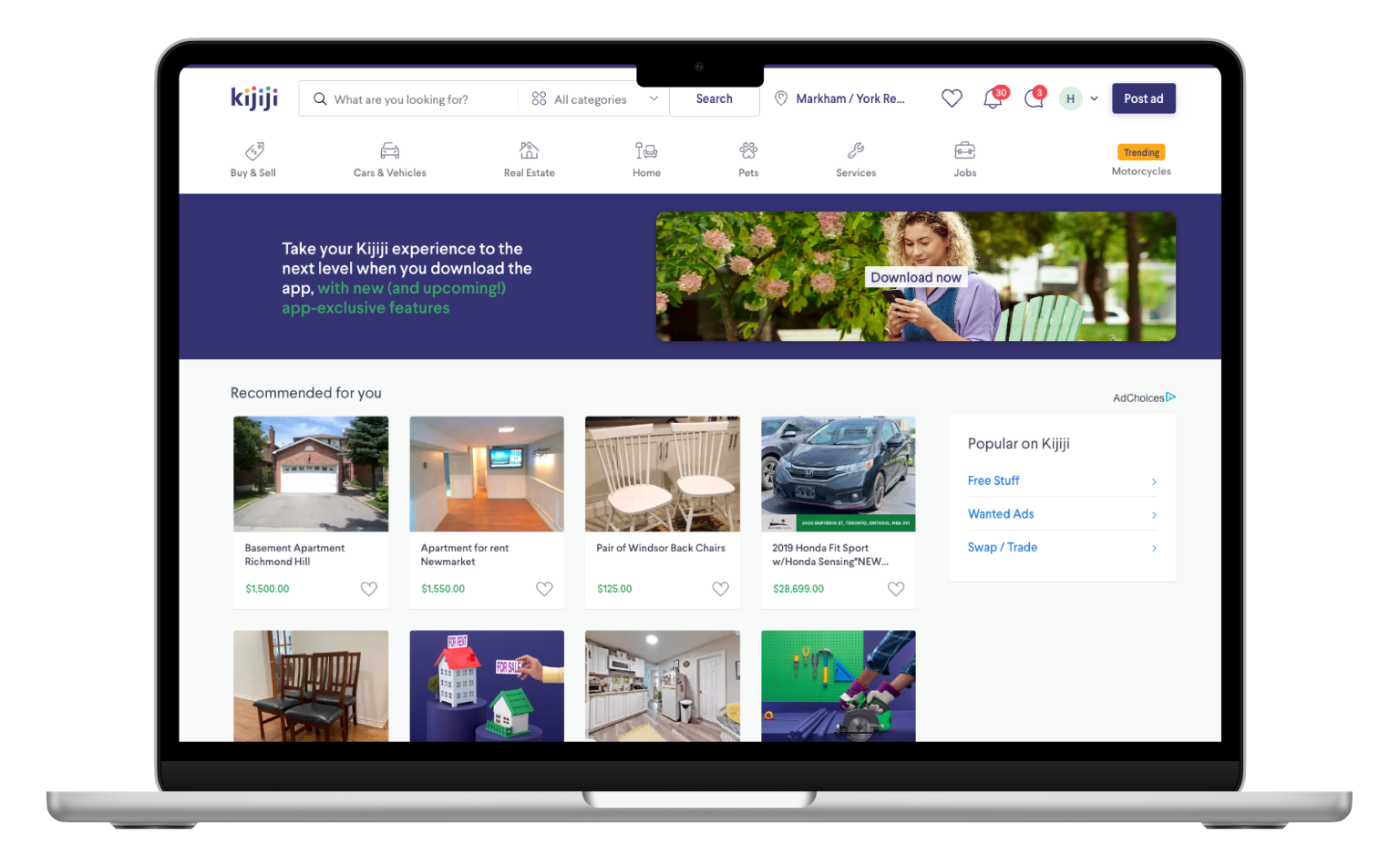
Throughout this project, I completely transformed how Kijiji finding worked. We went from a cluttered wall of categories to an intuitive search-driven interface, made search results much more relevant through better algorithms and understanding user behavior, and added recommendations based on user history and browsing patterns.
REMEMBER THE OLD KIJIJI?
When I arrived at Kijiji as the buyer persona product manager, the homepage was essentially a "wall of category links" that overwhelmed users and made finding what they were looking for incredibly difficult. The interface showed every possible category upfront, creating a cluttered experience that didn't help users discover what they wanted to buy. This approach worked well for users who knew exactly what they wanted, but failed to serve the majority who were browsing or exploring different options.
Assembling a cross-functional team of 2 front end developers, 2 backend developers, a QA, and a scrum master, with design vision established by UX and Marketing, we set out to transform the buyer experience. Our mission was clear: make finding easier and more intuitive for users who didn't know exactly what they were looking for.
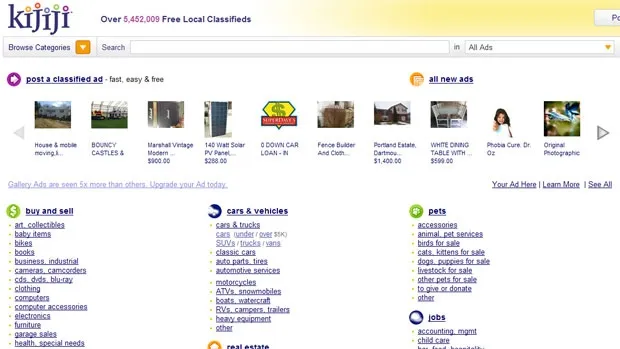
The business was clear in their needs and the challenge was straightforward. Kijiji needed to improve the buyer experience to drive more engagement and leads, but any changes had to be carefully balanced to avoid disrupting the existing revenue streams that were working well.
INCREASE REPLIES (LEADS) WITHOUT NEGATIVELY IMPACTING ADVERTISING REVENUE.
In order to achieve this goal, I focused the team on 3 strategic pillars. These pillars were ordered in a way where each pillar enabled the next.
Strategic Finding Pillars
Redesign
Imagine every conversation with your friends didn't start with 'Oh, I love Kijiji but it's pretty dated'.
Search Relevancy
Imagine if searching for 'bikes in Toronto' actually showed you bikes that were in Toronto...
Personalization
Imagine a Kijiji experience that served tailored content relevant to you.
Updating the Brand
The first step was to update the platform so we could build on top of it. We knew from qualitative feedback that the Kijiji brand was fun, but dated. Our competitors were delivering fresh and clean experiences, and the business declared an objective to update the Kijiji brand. I was responsible for redesigning the 3 primary pages: the homepage, the SRP (Search Result Page), and the VIP (View Item Page).
Before
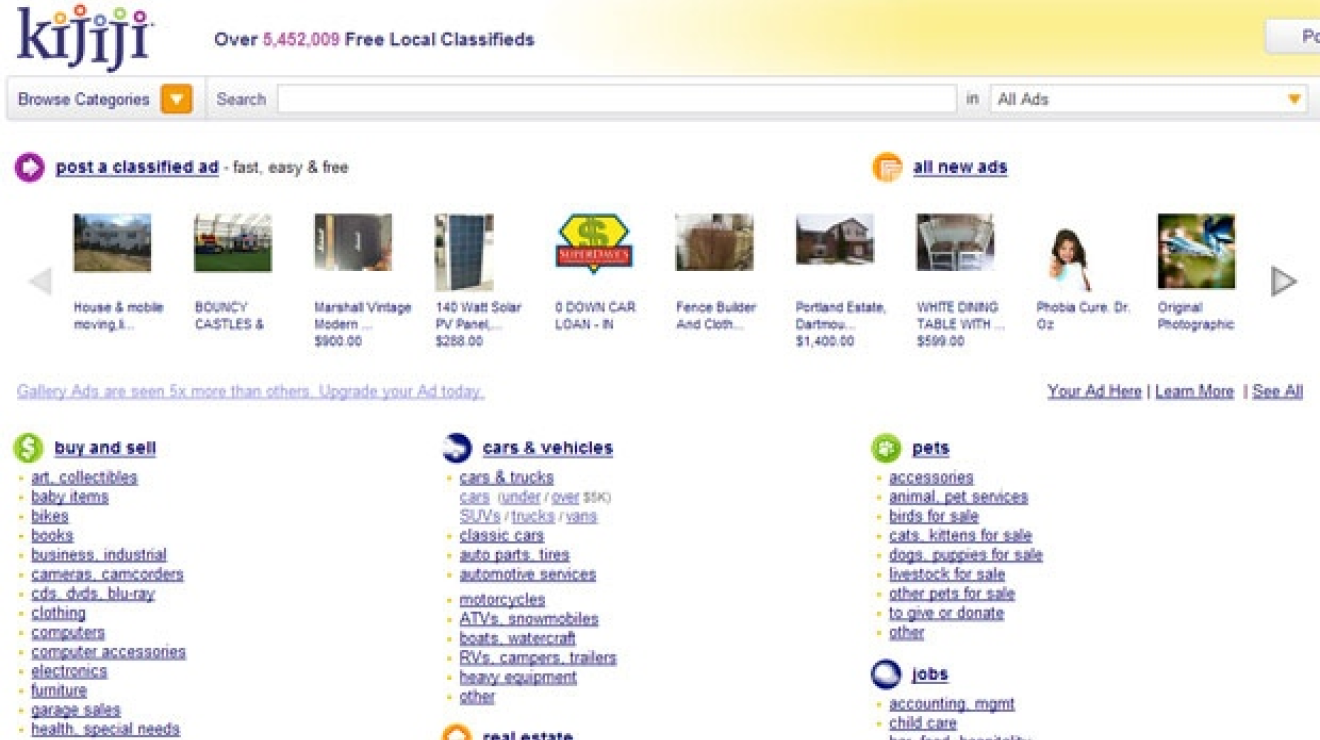
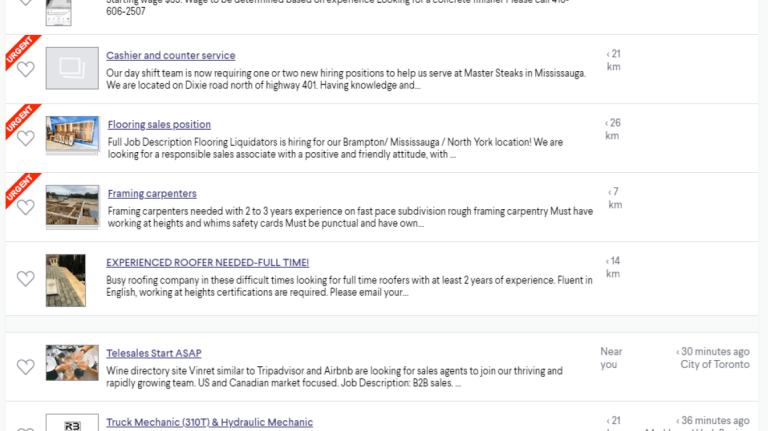
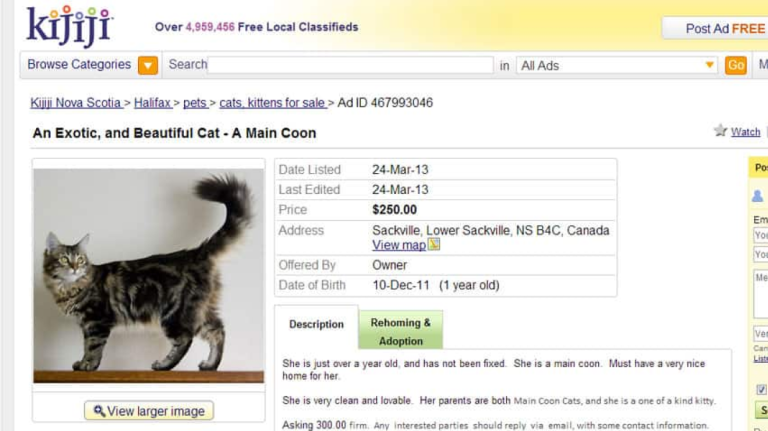
After

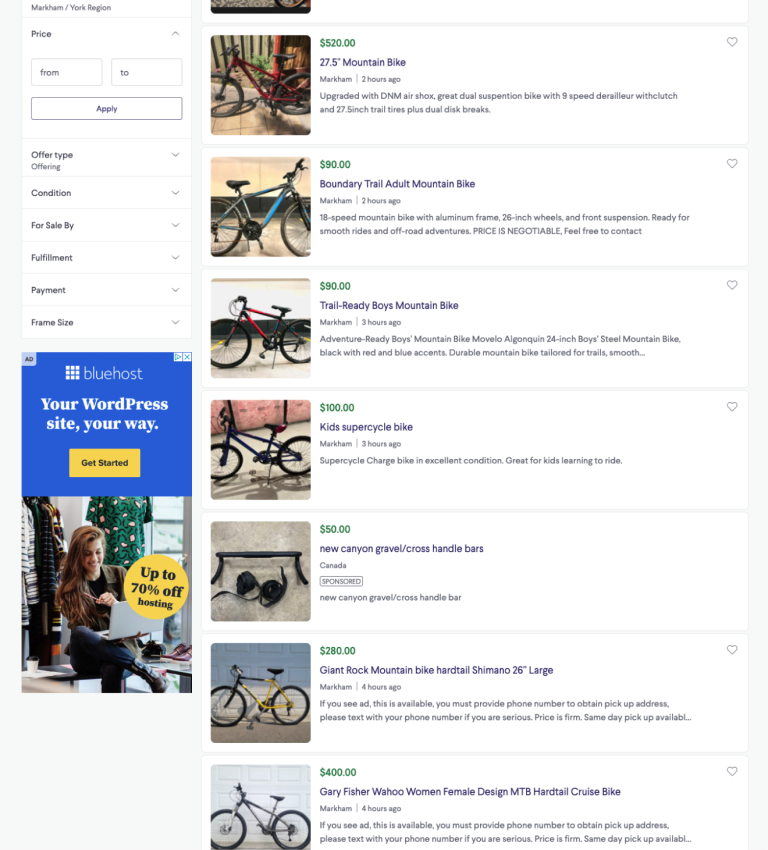
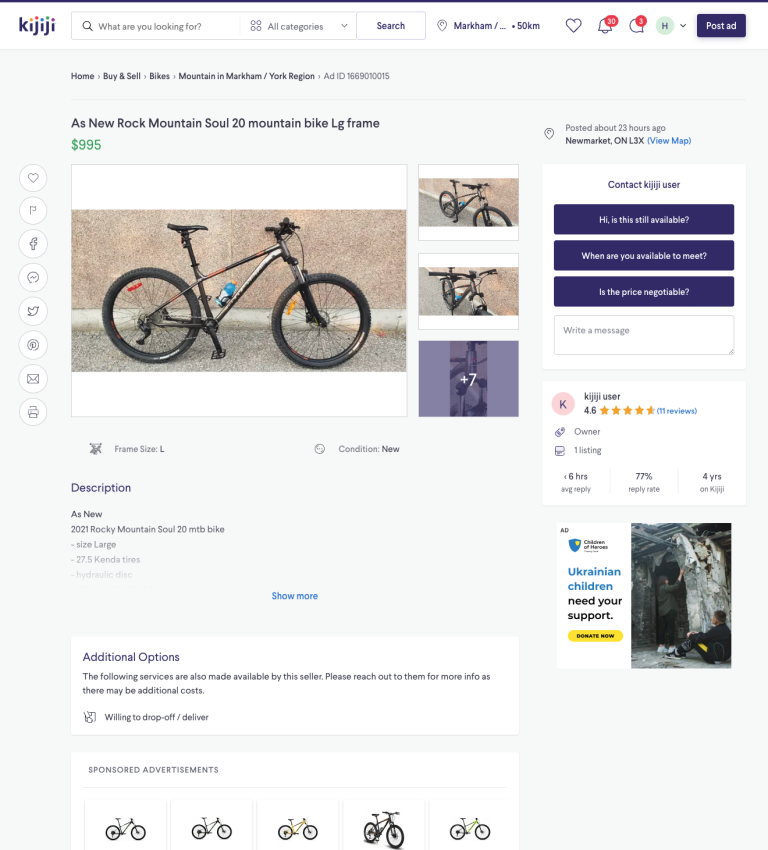
Creating a more editorial homepage experience enabled the marketing team to promote seasonal messaging, and also shifted the experience from browsing links, to search. SRP and VIP pages performed slightly better on engagement metrics (VIPs/user, SRPs/user, replies/user).
Search Focus

Shifting from a browse experience to search initially resulted in a decline in ad revenue as users had fewer opportunities to click around and generate impressions. However, once users became familiar with the search-driven experience, we stabilized and discovered that while we lost volume, the value of each click increased dramatically due to stronger user intent.
SEARCH RESULT PAGES YIELD HIGHER AD REVENUE THAN BROWSE PAGES DUE TO HIGHER AD RELEVANCY
This insight fundamentally changed how we thought about user experience and revenue. Quality of engagement became more important than quantity of page views. Users with specific search intent were more valuable to advertisers, making search result pages our most profitable touchpoint despite having fewer total impressions than the old browse experience.
Required login
Building on our search-focused success, we identified another opportunity to increase ad revenue while improving user experience. The platform had historically allowed users to perform key actions without authentication, limiting our ability to personalize experiences and deliver targeted advertising. A strategic shift was made to encourage login at critical engagement points.
Reply
Users are prompted to login when sending messages to sellers. This enables communication tracking and personalized recommendations.
Favourite
Login required when saving items to favorites. Enables personalized recommendations and cross-device browsing history.
Post Ad
Authentication required before creating listings. Helps reduce spam and provides access to advanced listing tools.
My team led the initiative focusing on the most complex flow first (replies). The architecture was then applied to Favourites and then supplied to the Seller team to implement with Post Ad.
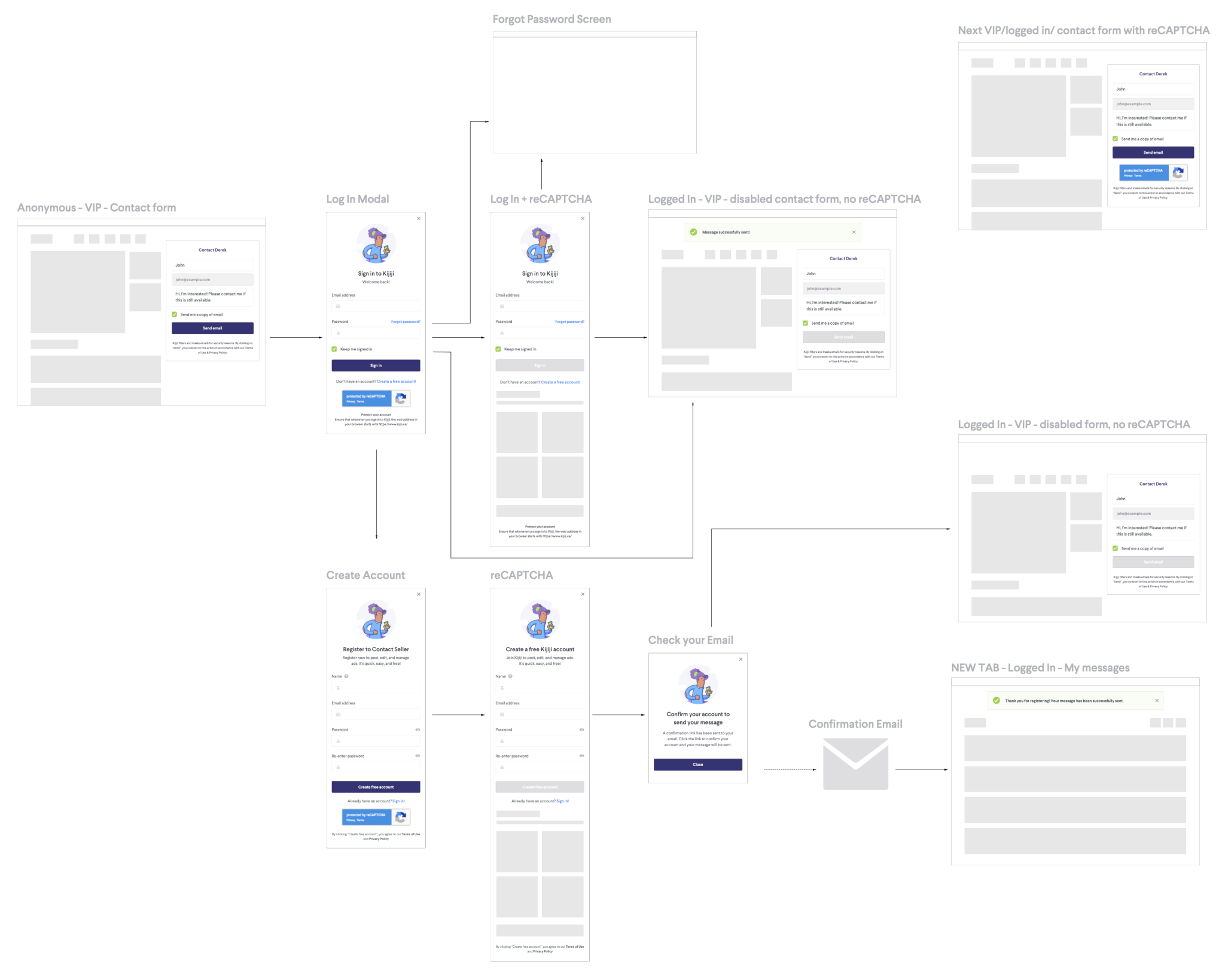
Requiring authentication at these key touchpoints delivered significant value for both users and the business. Users gained personalized experiences, saved preferences, and seamless cross-device functionality. For the business, we achieved better user targeting, improved ad relevancy, and enhanced data quality for analytics. Authenticating users enabled us to remove recaptcha from the reply screen by ensuring that users were validated during authentication, creating a smoother user experience while maintaining security.
Canned Messages
Now in a position to be able to make an impact on replies, we invested in canned message responses to reduce friction with communication. This feature was designed to streamline the conversation process and help users quickly express their intent without typing out repetitive messages.
Working with data, I was able to identify the most common phrases typed in chat. The vast majority fell into three buckets, which represented the core communication patterns between buyers and sellers on the platform. This analysis revealed that users were often asking the same questions and making similar requests.
Availability
Is the item or service still available? This was the most common question, accounting for nearly 40% of all initial messages between buyers and sellers.
Meeting
Meeting time and location details. Users frequently needed to coordinate pickup or viewing arrangements, making this a high-priority communication need.
Price
Negotiation on the price of the item or service. Price discussions were common but often followed a predictable pattern that could be streamlined.
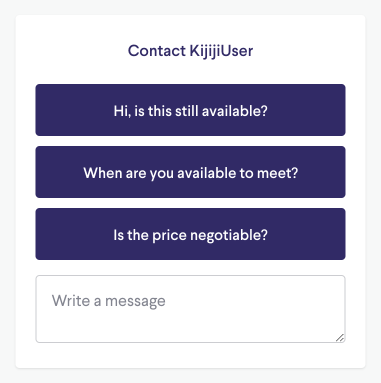
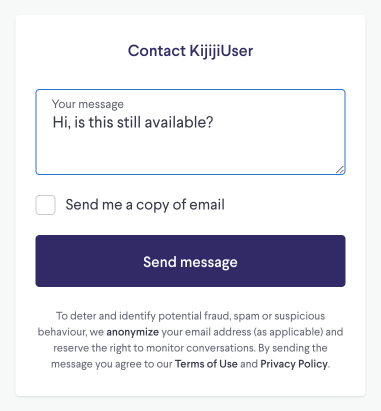
The initial test sent messages immediately when users selected a canned response, but this proved too jarring for users. The solution was to add an intermediate confirmation step that allowed users to review and customize their message before sending. This approach maintained the speed benefit of canned messages while giving users control over their communication and ensuring all required legal copy was properly displayed.
Key Learnings
Replies Increase
I was thrilled to see a significant 3% increase in replies.
Seller Noise
The increase in replies was interpreted by some sellers as noise/low quality leads.
More Opportunity
Through interviews and testing, we learned that messages needed to be more nuanced and flexible to fully meet the user need.
Dominant Category
With communication improvements in place, we shifted focus back to core finding functionality to improve search result relevancy.
SEARCHING FOR "CAR" RETURNED RESULTS FOR CARS, TOY CARS, CARPET, ETC. THE SEARCH WILD WEST.
Collaborating with the Finding Science team, we developed a service that would match a search string (e.g., "Mountain Bike") and determine if category dominance was achieved. By analyzing the view item page views resulting from the search string, if the top category was over 2x the size of the next option, it was considered dominant and results would be shown for that category. If dominance was not achieved, an all-category result page was displayed.
Dominant Category Key Learnings
Replies Increase
A small but significant increase was measured in replies (roughly 2%) as a result of showing a higher % of more relevant search results.
Search Bounce Decrease
The % of search result pages that did not lead to a view item page (search bounce) decreased significantly by roughly 5%.
Self Correcting
Due to the messy state of data to start, we found that dominant category success improved over time as with more frequent accurate results.
Search Suggestions
Similarly to the search result problem, we were also doing a poor job with search suggestions.
TYPING 'IPONE' WOULD PRIORITIZE MISSPELLED ADS, RESULTING IN POOR SEARCH RESULTS.
Working with the Finding Science team, I created a business case to integrate Algolia into the product. The solution evolved into a shared service across the eCG markets, minimizing costs for Kijiji.
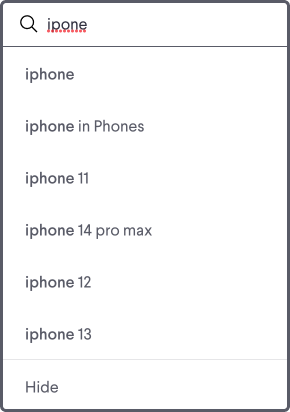
Search Suggestions Key Learnings
Search Bounce Decrease
Search bounce decreased by a whopping 8%. Search bounce is defined as a user who arrives at a result page but does not click through to an item.
Replies Increase
Replies had a modest increase of around 1.5% that were a direct result of the reduction in search bounce due to improved result relevance.
Cross Market Support
Other eCG markets were able to leverage the work my team did to integrate it into their products. This was a key strategy to markets could leverage wins from peers.
Radial Search
Location search at Kijiji could be very inaccurate. Geographic areas were tied to postal codes and updated manually using in-house software. For many users this worked fine, but for some it was extremely problematic, particularly those near borders.
CAN WE PROVIDE SEARCH RESULTS IN A RADIUS AROUND THE USER'S CURRENT LOCATION?
Through several iterations with continuous testing, we were able to arrive at a solution that provided users with the ability to geolocate themselves and define a distance they were willing to travel, while still maintaining the ability to search geographic zones if desired.

Radial Search Key Learnings
Flat Replies
We were quite surprised to see replies relatively flat with no significant increase.
CSAT Increase
Despite flat replies, qualitative feedback was positive, and we clearly had addressed several UX concerns.
Smaller Increments
To this day, this is the feature I reference to describe a time when we should have broken the solution down into smaller deliverables to reduce risk.
Personalized Homepage Feed
The stage is set. The redesign is completed and finding is greatly improved. The final phase is to inspire users with listings based on their usage data.
STRIKING A BALANCE BETWEEN 'WE THINK YOU'LL LIKE THIS' AND 'WE'RE WATCHING YOU'.
eCG Market Alignment
Data from another market demonstrated that a personalized feed had reply wins. Markets aligned to create a shared service.
Validate Hypothesis
Kijiji was first to market across eCG leveraging the shared service and were responsible for de-risking development for other markets.
Iterate to Success
Test on Android as it was quickest to market. With early confidence on engagement wins, the homepage ad revenue was the largest unknown risk.
Sketching The Vision
Providing design direction and vision for the execution required careful consideration of multiple stakeholders. Large hero images and ads were a result of significant pressure from leadership around revenue targets, which needed to be thoughtfully addressed within this personalized solution.

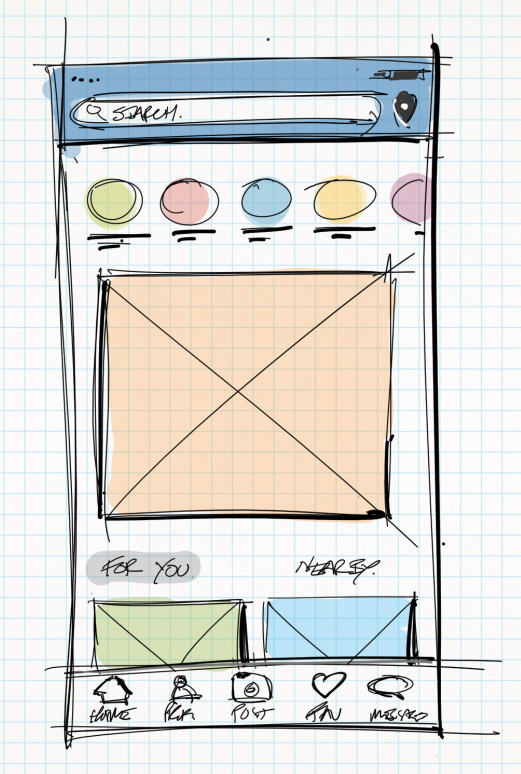
The Feed Anatomy
The feed was relatively simple to start, but very effective as we learned.
Recent Searches
Just over half of the feed results were from recent searches. The service would randomize results from the user's last 10 searches.
Favourite Categories
The remaining results were random items in the user's favourite categories. These were identified by looking at the categories where the user had viewed the most listings.
While there were plans to add saved searches, similar items to those favourited, and popular content from 'look-alike' users, this first iteration proved successful from an engagement perspective and enabled eCG markets to roll out the feature.
Ad Revenue Drop
Kijiji was a special case, being far and away the highest revenue generator across all of the eCG markets. The first iteration of the feed demonstrated an over 5% increase in replies, but a loss in display revenue due to the decrease in search result page views.
SPRINKLING POPULAR CATEGORIES TO THE FEED INCREASED RESULT PAGE VIEWS AND ACHIEVED REVENUE NEUTRAL.

With a winning variant in market, we fast-followed on iOS and Web to have the personalized homepage feed available to all Kijiji users across all platforms.
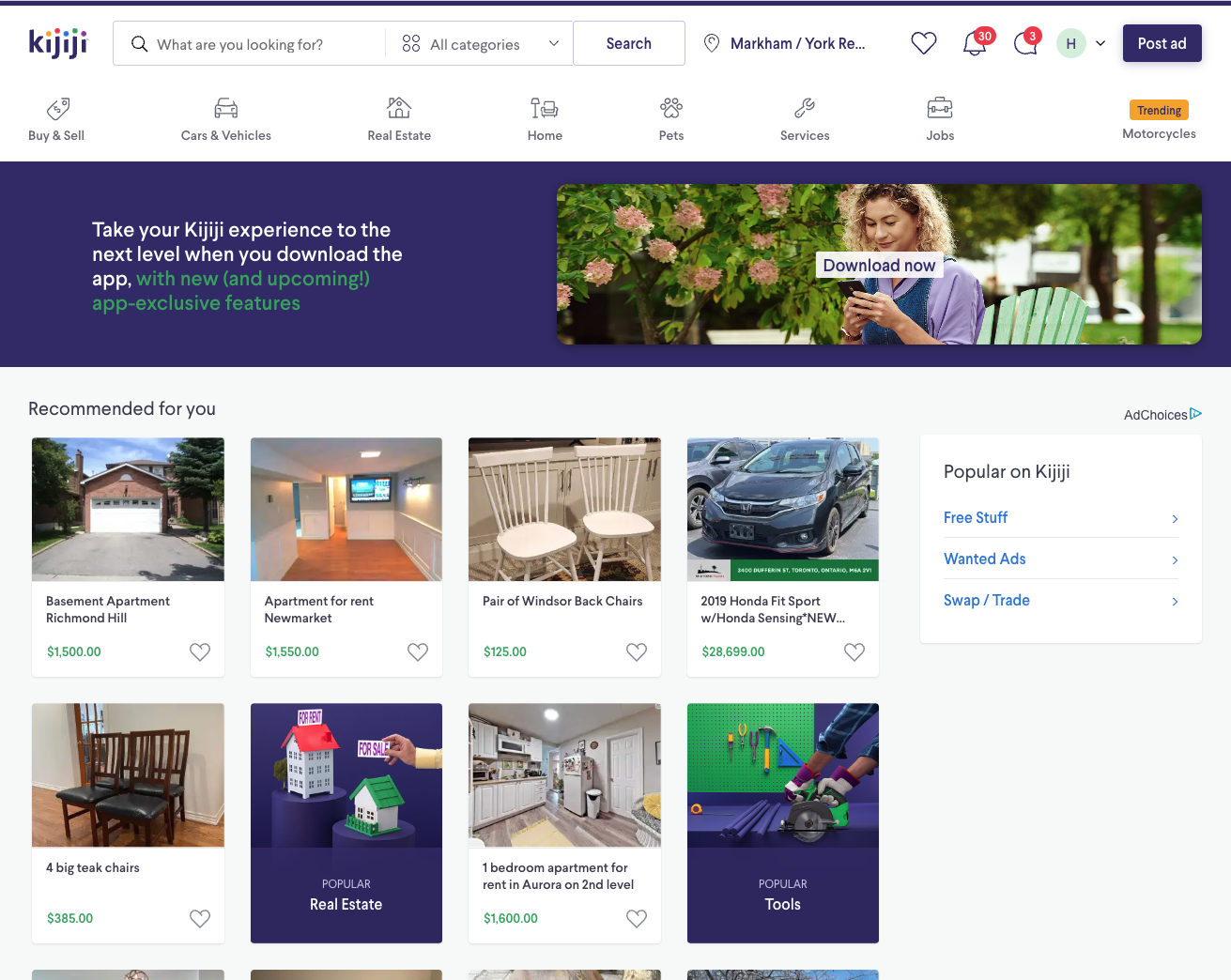
Feed Learnings
Simple is Effective
Despite having grand visions regarding what the feed could be, a simple blend of results based on engagement history proved very successful.
Sharing is Caring
Being first to market enabled us to support other eCG markets with their OKRs by enabling them to leverage the feed service.
Relevancy Wins
This is one of many examples I've seen in my career where higher relevance yields engagement wins.
Finding Summary
During my time with Kijiji, I was able to rebrand the finding platform to establish a strong experimentation foundation. Demonstrating finding wins with Dominant Category, Search Suggestions, Canned Messages, and Radial Search, I was able to improve user intent data. Coupled with Forced Login providing a much stronger view of the user, I was able to bring personalization to Kijiji.